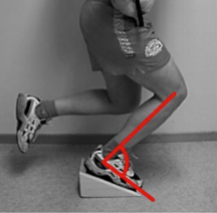Patellar Tendon pain, also known as jumper’s knee, is a painful condition most commonly seen in athlete’s engaged in jumping sports such as track and field, basketball, and volleyball. Common causes of this condition include training errors (too much too soon) and underlying weakness in the quadricep and hip musculature. The gold standard of treatment for this condition involves the application of sub maximal loading through Physical Therapy exercises to promote healing (remodeling) of the tendon. In short, doing too little is as bad as doing too much. Exercise begins to heal the injured tissue through a process called mechanotransduction and without it tissues remain in an immature, weakened condition. In the knee, promising research is being conducted showing the immediate and short term benefits of isometric loading (45-60 seconds), but new research suggests patients may benefit from shorter loading times.
In the Clinical Journal of Sports Medicine, Pearson and colleagues randomized patients with patellar tendinopathy to one of two groups (2018). Patients were placed in either a short duration (24 sets of 10 seconds) or long duration (6 sets of 40 seconds) isometric loading program at 85% of their maximum voluntary contraction. As you can see from the prescriptions time under load (240 seconds) was balanced between groups. Authors reported the short duration isometric loads were as effective as the longer duration isometric loads as long as the time under tension was equalized. This study provides more flexibility to both patients and Physical Therapists when treating patellar tendinopathy. The take home message is one size does not fit all and tendons should be optimally and progressively loaded over time based on the individual.
Contact the experts at MEND to learn how exercise can heal your current injury

